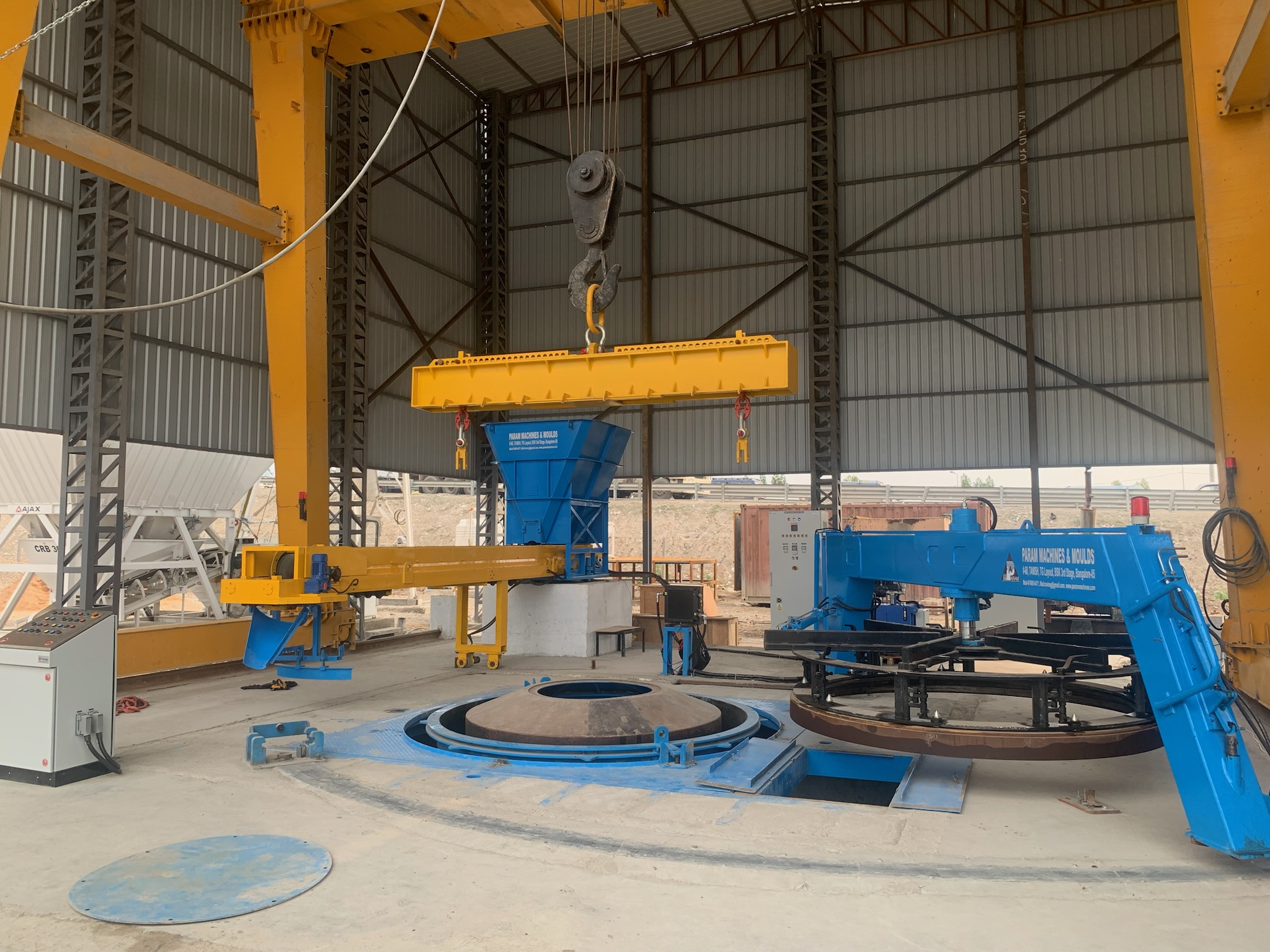
Pipe Manufacturing Solutions
Advanced Pipe Manufacturing Technology
Our vertical vibration pipe machines represent the pinnacle of concrete pipe manufacturing technology. Designed for precision, efficiency, and versatility, these machines produce high-quality RCC pipes, jacking pipes, and specialized pipes with various joint configurations to meet diverse infrastructure needs.
Vertical Vibration Technology
Precision compaction for superior concrete density
How It Works
Our vertical vibration technology uses high-frequency vibration to achieve optimal concrete compaction. The process involves placing concrete in precision moulds and applying controlled vertical vibration to eliminate air voids and achieve maximum density.
- High-frequency vibration for uniform compaction
- Precision mould alignment for consistent dimensions
- Automated vibration control for optimal results
- Quality assurance through density testing

Pipe Types & Applications
Comprehensive solutions for all infrastructure needs
RCC Pipes
Standard reinforced concrete pipes for drainage, sewerage, and water supply systems.
Jacking Pipes
Specialized pipes for microtunneling and trenchless installation methods.
NP3/NP4 Pipes
Non-pressure pipes for gravity flow applications with enhanced durability.
Joint Configurations
Precision joints for reliable connections
Spigot and Socket Joints
The most common joint type for concrete pipes, providing excellent sealing and flexibility. The spigot end fits into the socket end of the next pipe, creating a watertight connection.
Flush Joints
Designed for applications requiring smooth internal surfaces and maximum flow capacity. Flush joints eliminate internal projections that could cause blockages.
Special Features & Accessories
Custom solutions for specific requirements
Required Outlets & Connections
Side Outlets
Precision-cut side outlets for branch connections and service lines
Step Connections
Stepped connections for different pipe sizes and flow management
Lifting Holes
Pre-cast lifting holes for safe handling and installation
Quality Assurance
Dimensional Accuracy
±2mm tolerance on all dimensions for perfect fit
Surface Finish
Smooth internal and external surfaces for optimal performance
Testing Standards
Compliance with ASTM C76, EN 1916, and IS 458 standards
Manufacturing Process
Step-by-step production workflow
Mould Preparation
Precision mould setup with proper alignment and lubrication
Concrete Placement
Controlled concrete pouring with proper reinforcement placement
Vibration Compaction
High-frequency vibration for optimal density and surface finish
Demoulding & Curing
Precise demoulding followed by controlled curing and quality testing
Technical Specifications
Detailed machine capabilities and performance
 Param Machines & Moulds
Param Machines & Moulds